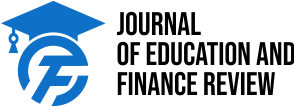The Role of International Aid in Pakistan's Education Sector
DOI:
https://doi.org/10.62843/jefr/2023.5152308Keywords:
International Aid, Education, PakistanAbstract
The purpose of this study is to conduct a systematic review of the literature addressing international aid to education. Pakistan's education sector has a long history of receiving foreign money via various programs and initiatives. The country has relied on foreign funding in several social areas. This document aims to bring together all of Pakistan's significant donor organizations in the field of education and to emphasize their major contributions to this field. In this study, the top multi- and bilateral assistance organizations that have made the most contributions to Pakistan's education system are outlined. This research highlights the significance of evaluating pertinent material about foreign aid in Pakistan's education sector. This work is important and helpful to readers, academics, and researchers of the foreign aid phenomena in Pakistan's education sector, both domestically and internationally.
References
Afzal, A., Mirza, N., & Arshad, F. (2020). Pakistan’s poverty puzzle: Role of foreign aid, democracy & media. Economic Research-Ekonomska Istraživanja, 34(1), 368-382. https://doi.org/10.1080/1331677x.2020.1788964
Alard, G. & Molina, M.D. (2008). The Influence of Government Policy and NGOs on Capturing Private Investment. VII OECD Global Forum on International Investment. OECD.
Ali, M. (2019). An analysis of US foreign aid policies towards Pakistan, from Truman to Trump. The Politics of US Aid to Pakistan, 20-64. https://doi.org/10.4324/9780429054822-2
Arshad, M., Farooq, O., Sultana, N., & Farooq, M. (2016). The role of foreign aid in the development of Pakistan’s education sector: a time-lag analysis. European Online Journal of Natural and Social Sciences, 5(3), 588-594.
Asiedu, E. & Nandwa, B. (2000). On the impact of foreign aid in education on growth: How relevant are the heterogeneity of aid flows and the heterogeneity of aid recipients. Review of World Economics, 143(4), 631-649. https://doi.org/10.1007/s10290-007-0125-9
Azarnert, L. V. (2008). Foreign Aid, Fertility and Human Capital Accumulation. Economica, 75(300), 766–781. http://www.jstor.org/stable/40071795
EU Projects with Pakistan | EEAS. (n.d.). https://www.eeas.europa.eu/pakistan/eu-projects-pakistan_en?s=175
Government of Pakistan, Finance Division. (2018). Economic Survey of Pakistan 2017-18. Retrieved from http://www.finance.gov.pk/survey/chapters_18/10-Education.pdf
Maqsood, F., & Ullah, S. (2013). Effectiveness of Foreign Aid Volatility for Education Sector: A Case Study of Pakistan. The Pakistan Journal of Social Issues, 4, 16.
Naviwala, N. (2016). Pakistan's Education Crisis: The Real Story. Woodrow Wilson International Center for Scholars.
Shams, F. (2017). Aid Effectiveness in Education: A Case Study of Pakistan From 2005-2015.
World Bank. (2022). World Bank – IFC Pakistan Office and Oxford Pakistan Programme Partnership. November 30, 2022 – January 30, 2023
Zia, R. (2013). Aid in education: A perspective from Pakistan. In Economics, Aid and Education (pp. 47-60). Brill.






